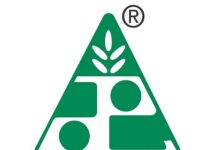The largest oil and gas bidding round attracted bidders, including Oil and Natural Gas Corporation (ONGC) and Oil India Limited (OIL), as well as private sector participant Vedanta Ltd. The Directorate General of Hydrocarbons (DGH) reported that most blocks received only two bids.
The OALP-IX bid round offered 28 blocks, covering an area of 1,36,000 square kilometres for oil and gas exploration and production. Notably, the round marked the first time Reliance Industries Ltd (RIL) and its partner bp plc collaborated with ONGC to bid for a block in the Gujarat offshore region.
In the past eight oil and gas bidding rounds since 2017, the Reliance-bp partnership had only participated in two rounds, successfully winning the blocks they competed for previously. This is their inaugural collaboration with ONGC for a shallow water block in the Gujarat-Saurashtra basin.
In the previous OALP-VIII round, ONGC did not submit a bid for the ultra-deepwater block in the Krishna Godavari basin that the Reliance-bp consortium sought. On September 21, the DGH announced the bidders for the 28 blocks under OALP-IX.
ONGC bid for 14 blocks independently and partnered with companies like OIL and Indian Oil Corporation Limited (IOCL) for four additional blocks. In total, ONGC submitted bids for 19 of the 28 blocks available.
Vedanta Ltd submitted bids for all 28 blocks, while Sun Petrochemicals Ltd bid for seven. Out of the 28 blocks offered, four attracted three bids each, while the remaining blocks received two bids, with Vedanta participating in all.
Blocks are allocated based on the highest revenue share offered from oil and gas production and the work program commitments. The OALP-IX round includes nine onshore blocks, eight shallow-water blocks, and 11 ultra-deepwater blocks, spanning eight sedimentary basins.
Since the inception of OALP in 2017, a total of 144 exploration and production blocks covering 2,42,055 square kilometers have been awarded. In the previous OALP-VIII round, out of the ten blocks offered, ONGC secured seven, while a consortium of Reliance Industries, bp, OIL, and Sun Petrochemicals each won one block.
As reported by hindustantimes.com, the OALP was introduced by the government to attract oil and gas companies to enhance India’s upstream sector. It guarantees marketing and pricing freedom under a revenue-sharing model and offers reduced royalty rates.

































